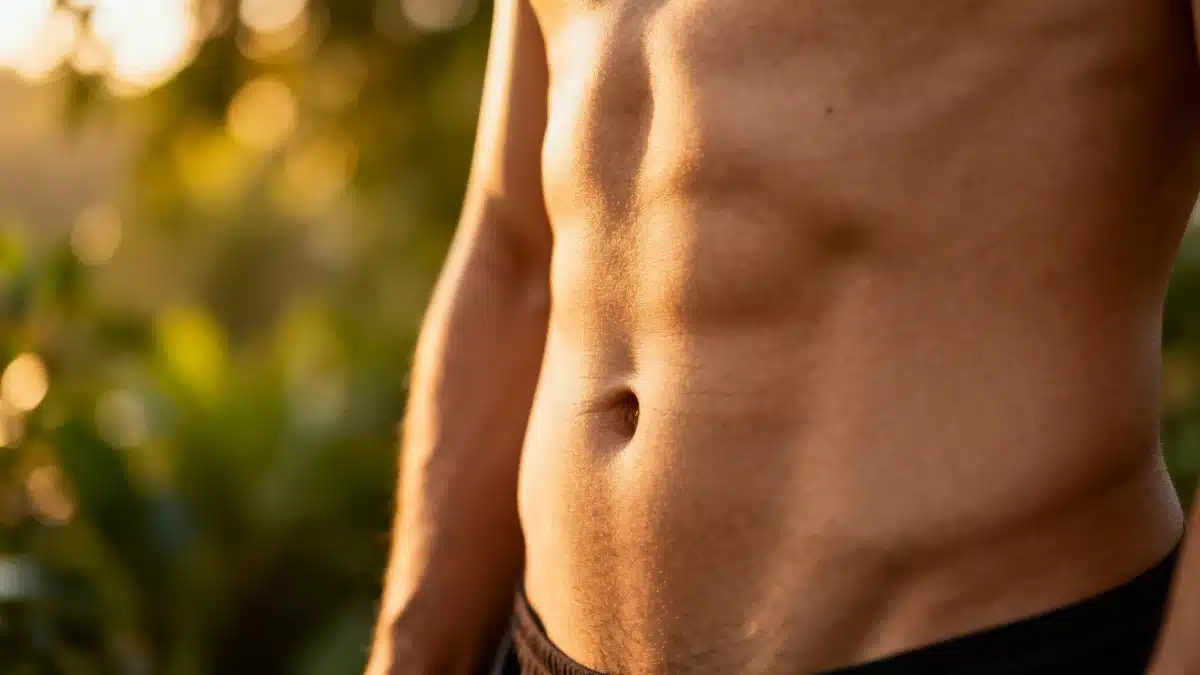Ah, belly fat. Faithful companion of our later years, unwelcome guest every beach season. But why does it cling so determinedly—and what daily shift can finally see it off?
Body Positivity vs. « Summer Body » Mania
With each arrival of summer, Operation Summer Body returns: strict diets spring up everywhere, all in the hope of ditching a few kilos before hitting the beach. Thankfully, the body positive movement provides a breath of fresh air. It encourages us to embrace our real selves and step away from the tyranny of thinness, promoting a healthier attitude toward our own bodies.
Still, facts from the World Health Organization remind us that one in six Europeans is obese, and in France specifically, about half the population is overweight. The culprits are no mystery: sedentary living and meals rich in ultra-processed foods, sugar, and unhealthy fats. It’s a combo that expands our waistlines and heightens the risks of heart and metabolic diseases. That’s why we now have the Body Roundness Index (BRI), which, unlike the classic BMI, considers the impact of visceral fat—the stubborn stuff stored around the belly.
Meet the Enemy: Types of Belly Fat
Abdominal fat comes in two varieties:
- Visceral fat is deep and leads to a firm, rounded belly.
- Subcutaneous fat lingers just under the skin, creating a softer, roll-prone appearance.
Subcutaneous fat is particularly persistent. Under the influence of stress and hormones, this layer keeps growing over the years, especially as metabolism slows. The process is gradual—and it can stealthily result from habits you don’t even notice.
Take the personal journey described by JB Rives, who found that, in youth, eat-anything-and-stay-thin magic eventually faded. Moving to a new city, eating poorly for comfort or to fight fatigue, and having sugar-heavy breakfasts set the stage for repeated sugar cravings and a slow, quiet accumulation of kilos. Those innocent handfuls of cheese or chips while prepping dinner? They add up, and slowly our habits start shaping our bodies.
Why Diets Alone Don’t Cut It
Many try to lose weight by restricting calories—seemingly logical but misleading. Our bodies aren’t basic calculators. They’re complex engines that need a steady supply of nutrients to run well. The typical quick fix? A meager plate of raw veggies. The problem: hunger strikes hard later, and we forget proteins, minerals, and healthy fats—each vital for balancing appetite hormones and maintaining metabolism.
This is where the great diet spiral begins:
- We lose some fat, but also precious muscle.
- Once we stop, the weight returns—mostly as fat, not muscle.
- Yo-yoing through repeated diets makes losing fat even harder over time, as our metabolism slows and muscle dwindles.
So what’s the fix? Stop tallying calories and eating less—focus on eating better. Practically, this means:
- Opt for more nourishing, larger meals that balance appetite, prevent cravings, and support long-term weight loss.
- Swap out ultra-processed, sugary, fatty foods, and overly frugal low-protein, low-fat meals.
- Start your morning with a savory, protein-rich breakfast for better satiety, blood sugar stability, and fewer sugar crashes.
What you eat to start the day impacts hormone balance for a full 24 hours. That sugar crash at 11am? Often, it’s because of that sweet breakfast—pro-tip: proteins and good fats help make those hunger hormones work in your favor.
Daily Shifts That Melt Belly Fat (No Magic, Just Science)
Intermittent fasting can also be a powerful ally—but only if you break your fast with the right foods. Skip the sugary starts, whether for breakfast or lunch. Fasting can encourage your body to unlock visceral fat reserves—the kind that hugs your organs and makes your belly hard and round—which signals excess energy intake from sugary, fatty diets.
During constant snacking, our bodies remain in perpetual digestion, always in storage mode. Intermittent fasting allows your liver to rest, and many find it jumpstarts metabolism so that visceral fat, the most dangerous type, can finally be reduced.
When it comes to subcutaneous fat, which is tougher to budge, the recipe is simple but not always easy: eat better, up your protein, and move more. You don’t need marathon training—just walking post-meal and keeping active all day can make a difference. Prefer sport? Muscle-centric activity like HIIT or strength training helps restore muscle lost from past diets.
And remember, there’s no age limit on reclaiming your health. Motivation or energy might flag, and you might feel stuck, but you’re never too old or too heavy to make a new start.
Conclusion:
Forget starvation diets and unrealistic expectations. Sustainable change is about nurturing yourself with balanced, abundant meals, being smart about sugar, and making movement a natural part of your day. That stubborn belly fat? It may have overstayed its welcome, but with a few daily shifts, it’s finally on notice!

John is a curious mind who loves to write about diverse topics. Passionate about sharing his thoughts and perspectives, he enjoys sparking conversations and encouraging discovery. For him, every subject is an invitation to discuss and learn.






